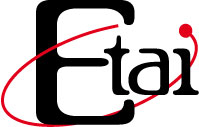English
Teachers' Association
of Israel
Tip of The Day for Presenters
Keep looking here - a new tip everyday!
July 8, 2010
33. Remember to thank the audience for coming and participating.
Previous Tips
32. Show your email on the last slide of your powerpoint presentation, so that people can get in touch later if they want to discuss anything.
31. If you are sending your handouts or presentations to Ann (ashlapo@gmail.com) for uploading to the site, make sure they are 'web appropriate'. For easy downloading, the files should not exceed 5MB and images should be adapted for web. If you need help, write Ann.
30. Ending: prepare a punchline, or nice joke to finish.
29. Don't use little animated pics on your slides: fun, but often distract audience's attention from what you're trying to say. Unless, of course, you use them to make a point.
28. Ending: make sure you end on time, or a little before.
27. Tell the audience in advance if you want to be interrupted or if they should keep questions to the end (but if the latter - then make sure you leave time.)
26. Keep eye contact with the audience; so you can't just read out a prepared text. Know your stuff and just explain it to them informally!
25. KEEP AN EYE ON YOUR WATCH the whole time to make sure you're timekeeping OK. Or ask a friend to tell you when you have ten / five / two minutes left.
24. Think in advance of what you'll cut out if you find you're running out of time.
23. Leave time at the end to summarize main points.
22. Tell your audience at the beginning of your session how it's planned and what the content is going to be.
21. Reminder: Send your handout(s) or presentation (ppt) to Ann Shlapobersky (ashlapo@gmail.com) before or during the conference (or IMMEDIATELY after) for uploading to the site.
20. If you are mainly doing participant tasks, leave yourself time to express your own opinion as well as hearing theirs: that's one of their main reasons for coming to your session, to hear what you think!
19. If you are mainly lecturing, make opportunities to 'involve' your audience now and again: elicit answers to questions, invite them to share with each other responses to something you've said.
18. Remember to SMILE! Enjoy yourself. Everyone is rooting for you.
17. First time presenter, bring a friend to your talk. A friendly face in the crowd may relax you.
(suggested by Richard Steinitz)16. Don't go mad with the animation when using PowerPoint: lines that enter the screen bouncing, or revolving, or swizzling, or whatever, are irritating and distracting. Straight 'appear' or 'fade in' are best.
15. Great Gaget: If you can, borrow or buy a 'wireless presenter' (PowerPoint remote) for the computer so you can transfer slides without being tied to the computer and mouse You'll be able to move around the room if you want to.
14. Have the title of your talk up on the screen from the beginning, so participants know they've come to the right place.
13. Get to the room well before your presentation, so you're ready with the equipment set up and able to greet participants with a smile.
12. Paper handouts cannot be prepared onsite, so if you need them, bring them with you. Estimate about 30. But have electronic versions ready to send to Ann or to participants. (See Tip#7)
11. DON'T read out your slides (or don't ONLY read out your slides!). Nothing more boring for participants.
10. When timing, try to make sure you leave five or ten minutes at the end for questions and discussion.
9. Write detailed notes on what you're going to say; not because you'll be reading them out (or even, possibly, referring to them) but because writing out helps to clarify your thoughts and make you more confident you know what to say.
8. Rehearse in front of a mirror and time how long your presentation takes: does it fit the time slot? Try to make sure you leave five or ten minutes at the end for questions and discussion.
7. Send your handout to Ann Shlapobersky (ashlapo@gmail.com) before or during the conference (or IMMEDIATELY after) for uploading to the site. Important - Write 'etai handouts' in the subject, the name of your talk and your name in the body of the email. If you do not want your handout online prior to the conference, please state.
6. Save your handout in Word 2003 or .rtf format so that other people can easily download it. Not in '.dat' files or 'docx' files. If you are using images, adapt them for the Internet so they won't be too large (too many MB's).
5. Check out the room you'll be speaking in well in advance. Make sure that your room has (or you have) all the equipment you need and that everything is working properly. If not, call for help!
4. Make sure you've ordered (or are bringing with you) all the equipment you need.
I ordered: laptop, overhead projector, barco, loud speakers, Internet connection, flip chart, DVD player, video projector. I brought myself: any of the previously listed.3. When preparing your powerpoint slides, remember the '6 by 6' principle: each slide should ideally contain about six lines of about six words each. But remember, sometimes one image can be worth more than '6 by 6' of words.
2. Prepare carefully, so you know exactly what you're going to say. Practice talking to an empty chair or mirror. Don't rely on last-minute inspiration (unless you are a professional performer used to improvising!).
1. Remember: your audience is on your side! They are voting for you, want to hear what you have to say and are grateful to you. They are your friends and colleagues, not critics. You have nothing to fear, and lots to enjoy.
|
ETAI Office:
|
 |
||||
